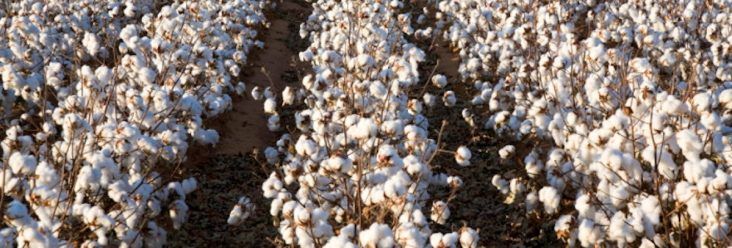New federal budget deal could benefit Arkansas cotton farmers
by February 12, 2018 4:55 pm 549 views

ripe cotton in field ready for harvest
A provision in the new budget deal reached by the U.S. Senate and House could benefit Arkansas cotton farmers by making them eligible for Price Loss Coverage (PLC), a United States Department of Agriculture program that helps offset farmers losses when prices drop for certain crops.
Arkansas lawmakers in Washington D.C. have tried to have a similar provision placed in the upcoming farm bill, but that’s a slow process, Agriculture Council of Arkansas Executive Vice-President Andrew Grobmyer told Talk Business & Politics. This provision will be a boon to the beleaguered cotton industry in the Natural State, he said.
“Cotton farmers will have a program that will trigger a safety net,” he said.
PLC program payments are issued when the effective price of a covered commodity is less than the respective reference price for that commodity, according to USDA. The effective price equals the higher of the market year average price (MYA) or the national average loan rate for the covered commodity. Covered commodities include corn, wheat, and soybeans.
The amount paid will be for a combination of cotton lint and cotton seeds. Cotton was trading at 77-cents per pound on Monday (Feb. 12.). Prices dropped as low as the middle 60-cent range last year, and it is difficult for farmers to make a living on those margins, he said. About eight years ago cotton traded for $2 per pound.
The program will benefit gins in Arkansas, too, he said. The safety net will encourage farmers to grow more cotton and that will in turn lead to more work at local gins. This will keep more businesses in operation and more workers at work, he said. State officials expect a slight uptick in cotton acres this planting season, he said.
When the 2014 federal farm bill was crafted, a safety net for cotton farmers was not included. Insurance provisions were, but those are intended more for natural catastrophes such as floods or drought. Cratering prices were not taken into account, Grobmyer said.
The federal government took action in 2016 to help the cotton industry. USDA’s Farm Service Agency (FSA) paid an estimated $300 million in cost-share assistance payments to cotton producers through the Cotton Ginning Cost-Share program, in order to expand and maintain the domestic cotton market, Grobmyer said. Eligible producers received a one-time cost share payment, based on the producer’s 2015 cotton acres reported to FSA, multiplied by 40% of the average ginning cost for each production region.
Cotton has to be ginned prior to marketing the lint for fiber, or the seed for oil or feed. Arkansas has 31 gins that employ an untold number of workers. Several gin operators have cotton crops, so the two enterprises are connected in many communities, Grobmyer said. If the gins are lost, it would hurt many rural communities.
Arkansas is ranked fourth nationally in cotton production in 2017, according to the USDA. The state harvested an estimated 1.06 million bales, up 22% (220,000 bales) compared with 2016. Yields were 1,162 pounds per harvested acre, up 66 pounds per acre from earlier projections, and up 87 pounds from last year. Farmers planted 438,000 cotton acres in 2017, a 16.8% (63,000 acres) uptick.
Grobmyer said he expects the U.S. House to have a farm bill ready by the Easter recess.
“We are pleased that Congress found a pathway to fix the farm bill for cotton growers, and we thank the members of the Arkansas delegation, especially Sen. (John) Boozman and U.S. Rep. (Rick) Crawford, who supported the effort … This is important to Arkansas’s overall economy,” Grobmyer said. “We look forward to working with our delegation and other agriculture leaders in Congress to develop the next farm bill. Providing this cotton fix now will help greatly in writing and further improving the farm bill.”
